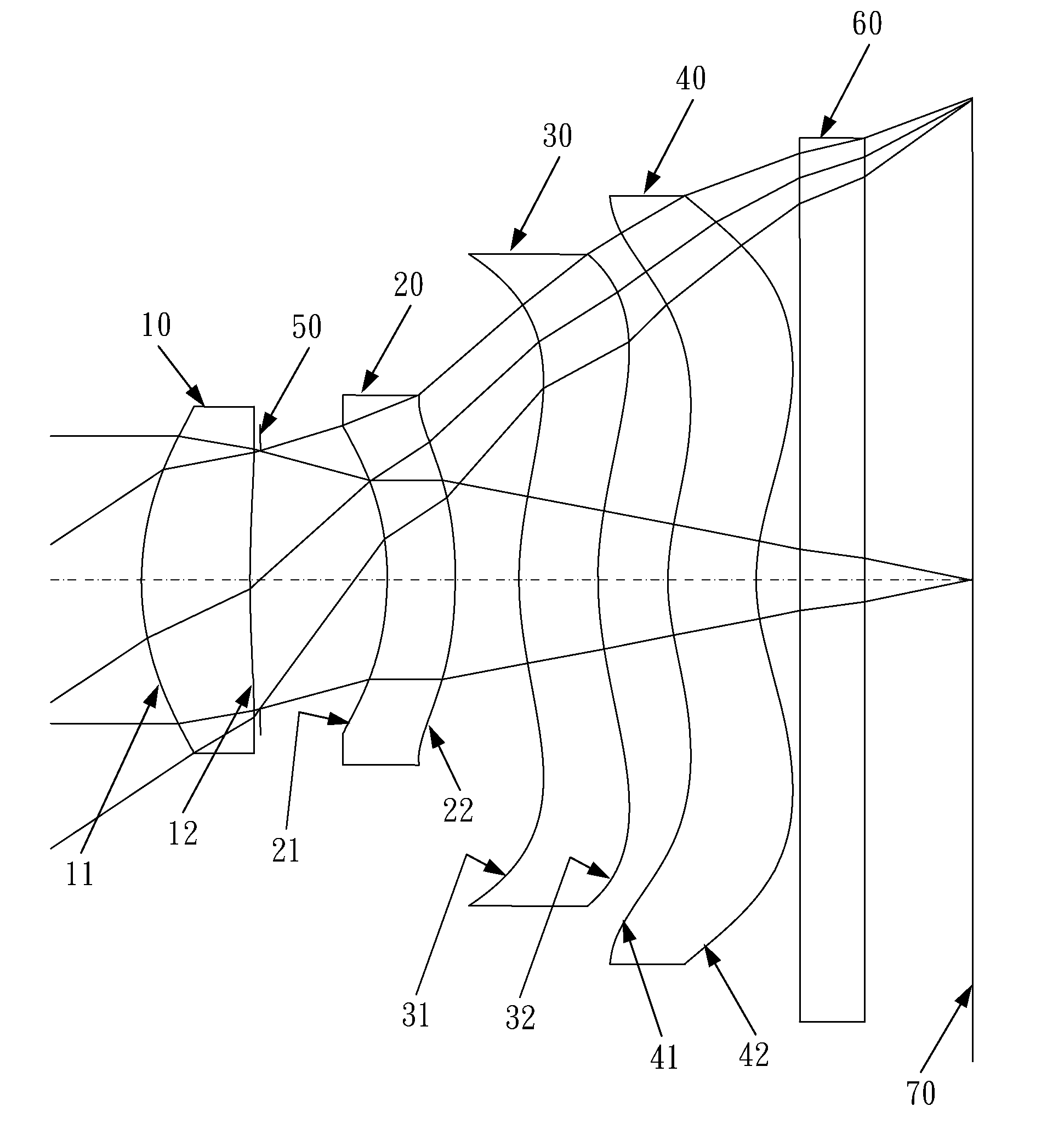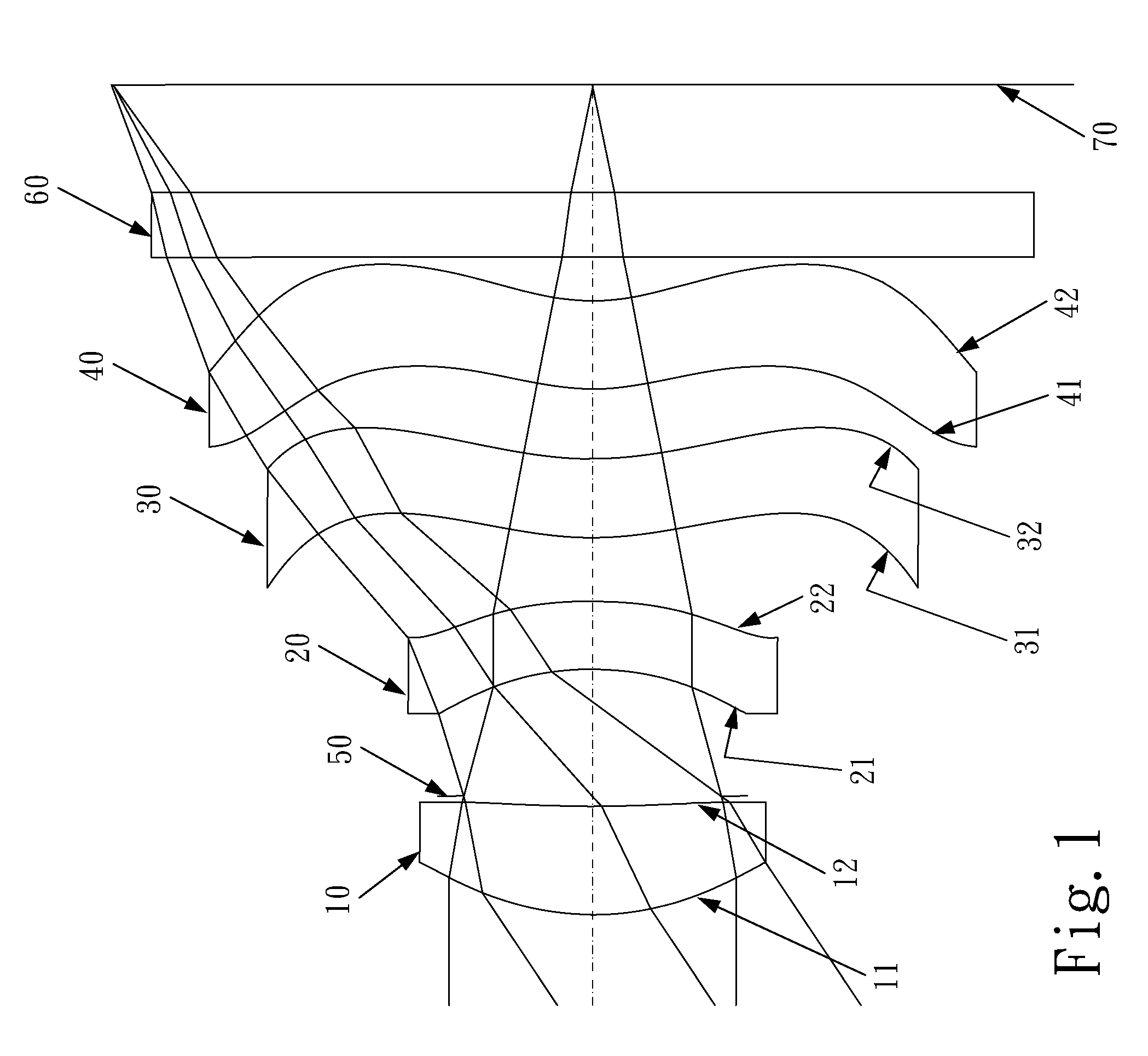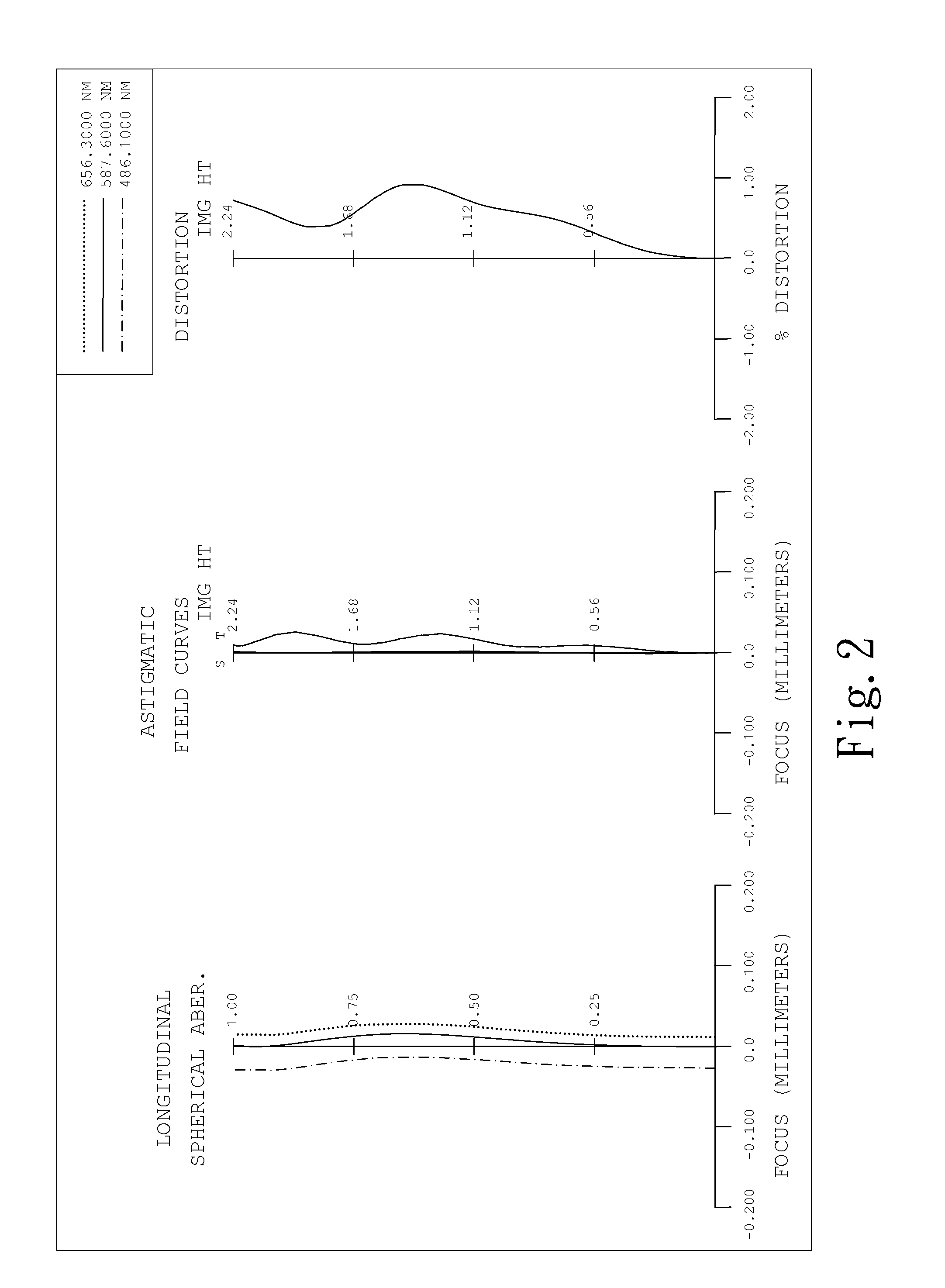Optical lens system for taking image
a technology of optical lens and image, applied in the field of optical lens system for taking image, can solve the problem of reducing the probability of shading, and achieve the effect of improving image quality and effectively reducing the volume of the optical lens system
- Summary
- Abstract
- Description
- Claims
- Application Information
AI Technical Summary
Benefits of technology
Problems solved by technology
Method used
Image
Examples
first embodiment
[0046]The equation for the aspheric surface profiles of the first embodiment is expressed as follows:
[0047]X(Y)=(Y2 / R) / (1+sqrt(1-(1+k)*(Y / R)2))+∑i(Ai)*(Yi)
[0048]wherein:
[0049]X: the height of a point on the aspheric lens surface at a distance Y from the optical axis, relative to the tangential plane of the aspheric surface vertex;
[0050]Y: the distance from the point on the curve of the aspheric surface to the optical axis;
[0051]k: the conic coefficient;
[0052]Ai: the aspheric surface coefficient of order i.
[0053]In the first embodiment of the present optical lens system for taking image, the focal length of the optical lens system for taking image is f, the focal length of the first lens element is f1, the focal length of the second lens element is f2, the focal length of the third lens element is f3, the focal length of the fourth lens element is f4, and they satisfy the relations:
f=3.30 [mm];
f / f1=1.08;
f / f2=−0.36;
f / f3=0.06;
f / f4=−0.02.
[0054]In the first embodiment of the present o...
second embodiment
[0072]In the present optical lens system for taking image, the focal length of the optical lens system for taking image is f, the focal length of the first lens element is f1, the focal length of the second lens element is f2, the focal length of the third lens element is f3, the focal length of the fourth lens element is f4, and they satisfy the relations:
f=3.22 [mm];
f / f1=1.02;
f / f2=−0.40;
f / f3=0.13;
f / f4=0.08.
[0073]In the second embodiment of the present optical lens system for taking image, the refractive index of the first lens element is N1, and it satisfies the relation:
N1=1.544.
[0074]In the second embodiment of the present optical lens system for taking image, the refractive index of the third lens element is N3, and it satisfies the relation:
N3=1.544.
[0075]In the second embodiment of the present optical lens system for taking image, the Abbe number of the first lens element is V1, the Abbe number of the second lens element is V2, the Abbe number of the third lens element is V3,...
third embodiment
[0091]In the present optical lens system for taking image, the focal length of the optical lens system for taking image is f, the focal length of the first lens element is f1, the focal length of the second lens element is f2, the focal length of the third lens element is f3, the focal length of the fourth lens element is f4, and they satisfy the relations:
f=3.31 [mm];
f / f1=1.14;
f / f2=−0.40;
f / f3=−0.06;
f / f4=0.10.
[0092]In the third embodiment of the present optical lens system for taking image, the refractive index of the first lens element is N1, and it satisfies the relation:
PUM
 Login to View More
Login to View More Abstract
Description
Claims
Application Information
 Login to View More
Login to View More - R&D
- Intellectual Property
- Life Sciences
- Materials
- Tech Scout
- Unparalleled Data Quality
- Higher Quality Content
- 60% Fewer Hallucinations
Browse by: Latest US Patents, China's latest patents, Technical Efficacy Thesaurus, Application Domain, Technology Topic, Popular Technical Reports.
© 2025 PatSnap. All rights reserved.Legal|Privacy policy|Modern Slavery Act Transparency Statement|Sitemap|About US| Contact US: help@patsnap.com



